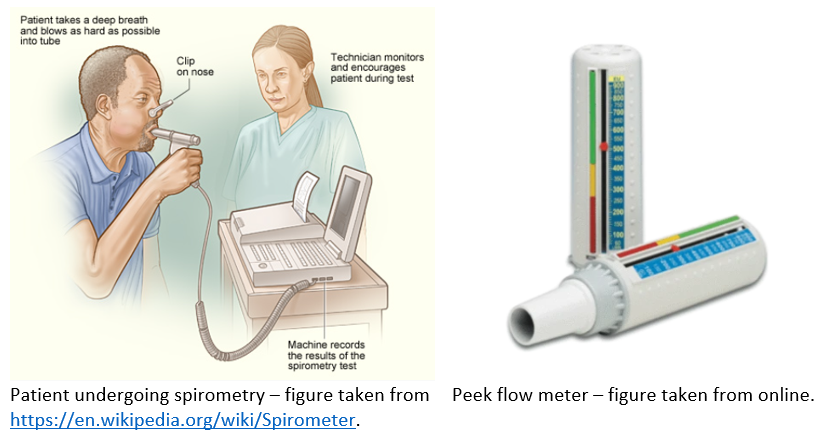8.2 Pulmonary Function Tests
Learning Outcomes
Be able to:
- Relate the concepts of FVC, FEV1 and FVC/FEV1 ratio to obstructive and restrictive disease.
- Recognise reported spirometry results in relation to disease
- Explain changes in peak flow in relation to changes in respiratory disease status.
Introduction to Pulmonary Function Tests
Pulmonary function tests provide objective data on a patient’s lung function. They are used to:
- Measure underlying lung function
- Changes in lung function secondary to treatment or exacerbations
- Monitor changes in progressive lung disease such as COPD
- Monitor lung function during use of drugs toxic to the lungs such as oral gold or amiodarone.
The most common pulmonary function tests include:
- Spirometry which is diagnostic for some respiratory diseases, allows differentiation between obstructive and restrictive diseases and diagnosis for diseases such as asthma
- Peak expiratory flow, which allows patients to monitor their own respiratory function at home, and detect changes in respiratory function that are due to worsening of airway disease.

A pharmacist does not need to interpret a spirometry pulmonary function test but they should be able to read a report and relate the findings to the diagnosed respiratory disease.
📺 Watch the brief lecture video that describes ” The basics of pulmonary function tests” (22:21 minutes)
COMMONWEALTH OF AUSTRALIA Copyright Regulations 1969 WARNING
This material has been reproduced and communicated to you by or on behalf of James Cook University in accordance with section 113P of the Copyright Act 1969 (Act).
The material in this communication may be subject to copyright under the Act. Any further reproduction or communication of this material by you may be the subject of copyright protection under the Act. Do not remove this notice.
